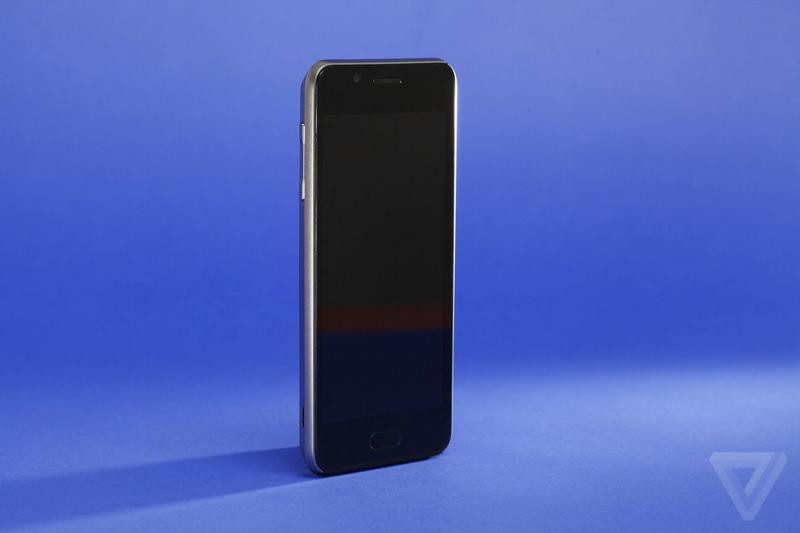
Many webOS fans are familiar with the WindsorNot, a full-touch webOS smartphone that never saw an official release but has leaked out on multiple occasions, giving us a glimpse at what may have been had HP and then-CEO Léo Apotheker not opted to "discontinue operations" on webOS hardware in August 2011. The WindsorNot isn't the only project that HP had kicked around its labs, though, and today a new report has shed some light on the other webOS goodies that were killed before they had a chance to hit store shelves.
The Verge has posted a lengthy piece that details several pieces of webOS hardware and software that were in development before HP unceremoniously gave the platform the axe. The device you see above reportedly goes by the name "Mako" and offers a design that's quite a bit different than the rounded look and feel of the Pre and Veer.
The Mako was slated to come to market filled to the brim with high-end features that would rival the HTC One X and include glass on its front and back, a high-res display, 4G LTE and wireless charging. It was originally slated to come to market in early 2012, but apparently the Mako never even made it into the testing phase of its life, instead existing only in development plans and prototypes like the one above.
Moving on to bigger devices, HP was reportedly cooking up sequels to the TouchPad for late 2011 as well as a high-res tablet expected in late 2012 that would challenge Apple's iPad. The company is also said to have been planning a tablet known as the "Twain" that would slide up to reveal a physical keyboard.
Finally, it's said that Palm and HP also had some big software goodies in the works. One example is "Eel," the codename for the next major version of webOS. The software reportedly included a combination of webOS's card stacks and sliding panels that would open up content in a new panel that would be included in a stack with the related app. The user would then have the option of taking that panel and moving it to another stack. It's also said that Palm was working on a more radical redesign of webOS called "Mochi" that mixed a flat design with white backgrounds and heavy colors.
Today's report shows that there was quite a bit of change going on with webOS when HP CEO Léo Apotheker made the decision to end work on the platform's hardware. While devices like the WindsorNot and TouchPad sequel were a bit more of the same that we'd seen before, the Mako, Twain and Mochi look like they were bringing higher-end hardware and a fresher look and feel to webOS. Of course, we'll never know for sure how webOS would've fared had those new products actually been released, but it's clear that the platform would've faced an uphill battle against a growing Android and iPhone hardware that was spreading to new U.S. carriers.
The webOS that we came to know on hardware like the Pre and Pixi may be gone, but the platform has gone through a bit of a resurrection lately thanks to LG. The Life's Good crew bought webOS from HP earlier this year and will show off a smart TV powered by the card-based OS at CES 2014.
Details on the TV are light, but leaks have shown that it's a pretty industrial-looking piece of kit. LG has also said that it plans to support the Enyo app development framework used by webOS in the past, and one leak even claimed that LG may end up developing webOS further and using it on new smartphone hardware. None of that is even close to being official right now, but one thing I do know is that it's definitely an interesting time to be a webOS fan.
If you've ever had any interest in webOS and the hardware that it ran on, be sure to hit up The Verge for many more images and details on the platform almost became.
Via The Verge